Rice - a familiar plant but carries within it a long-standing culture of the Vietnamese people. Not only a source of life, rice is also a memory, a symbol, a starting point of the rice civilization that has nourished the Vietnamese people for thousands of years.
From the golden fields of harvest to each fragrant meal, … rice is present in every slice of Vietnamese life.
From motherland to civilization
Rice plants appeared thousands of years ago, closely linked to the formation of Asian civilizations. And in Vietnam, archaeological sites such as Phung Nguyen, Go Mun, Dong Dau... have discovered traces of straw, next to farming tools. This proves that ancient Vietnamese people knew how to grow wet rice since prehistoric times.
It is not by chance that Vietnamese people chose rice as their main crop. With a tropical monsoon climate, a dense river system, and fertile land, Vietnam is clearly the ideal land to develop wet rice agriculture. And because of that, rice not only became the main food crop, but also laid the foundation for the development of the typical wet rice civilization of Southeast Asia.
Rice plants do not only grow from the soil, but also grow from memory - the memory of a people who live on the soil, are attached to water, and are grateful for each crop.
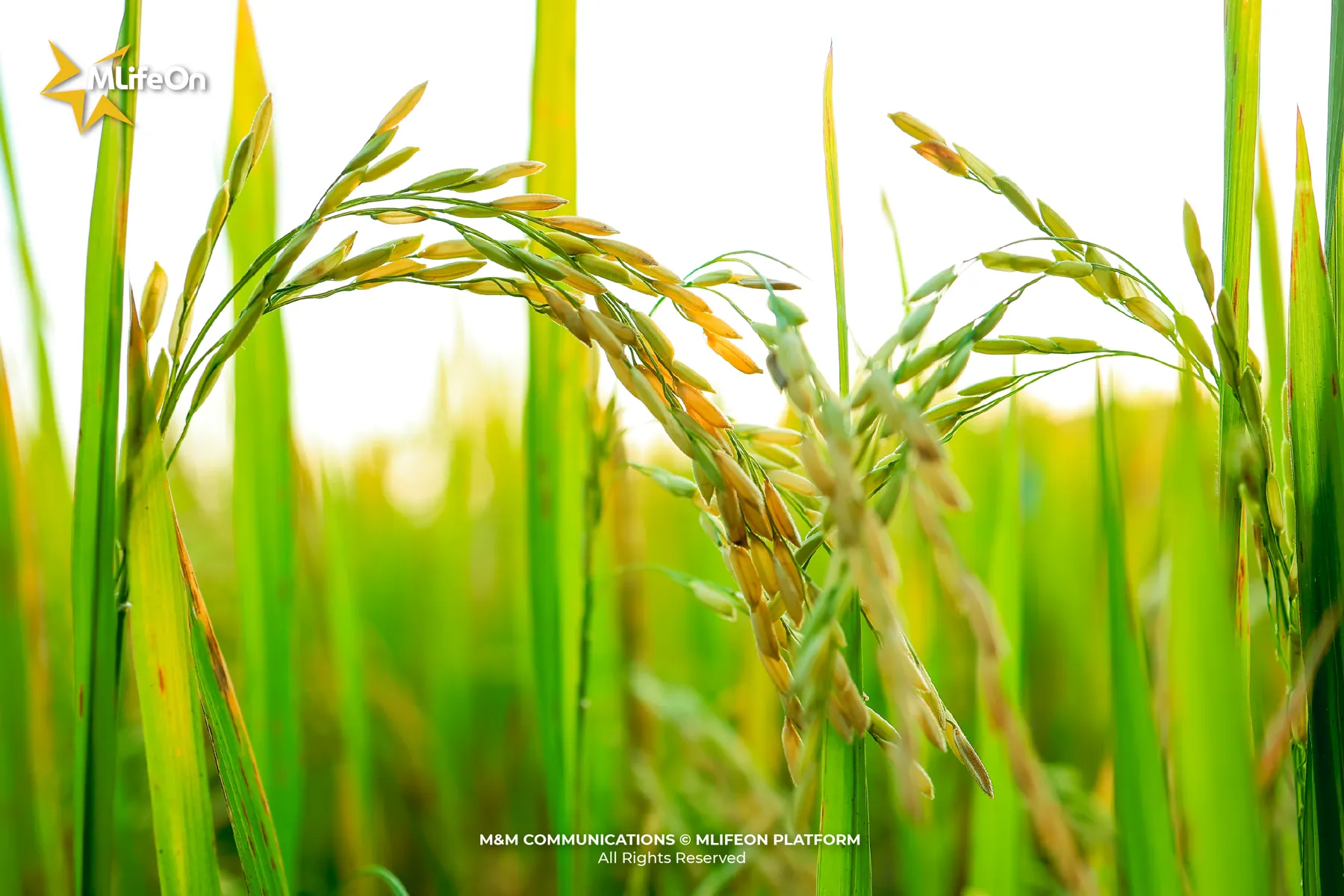
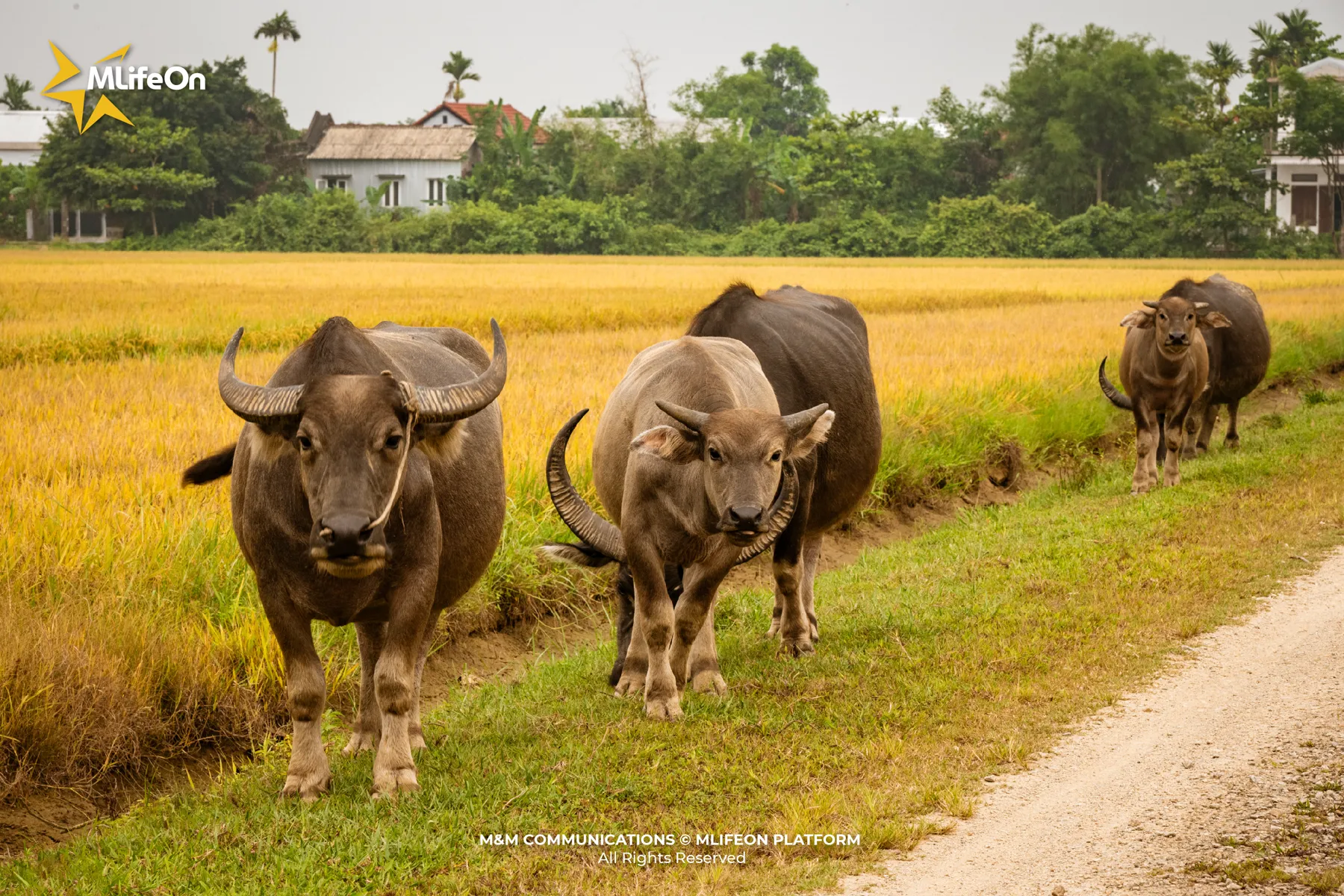
Rice nourishes and shapes the nation
Since the Van Lang - Au Lac period, Vietnamese people have known how to build banks to retain water, lead water to the fields, sow seedlings, and cultivate rice. Rice fields are not only places for food production, but also a living space for the community, where agricultural festivals such as going to the fields, praying for rain, and giving thanks for the harvest take place.
Throughout history, rice has played a central role in economic and social life. From the feudal court to the countryside, from war to peacetime, rice has always been a vital factor. During the resistance war, rice was the food source to feed the army, a symbol of a strong rear. In peacetime, rice is the main food source, meeting domestic consumption and export needs.
But more than its economic value, rice is the link between the past and the present, between people and mother earth.
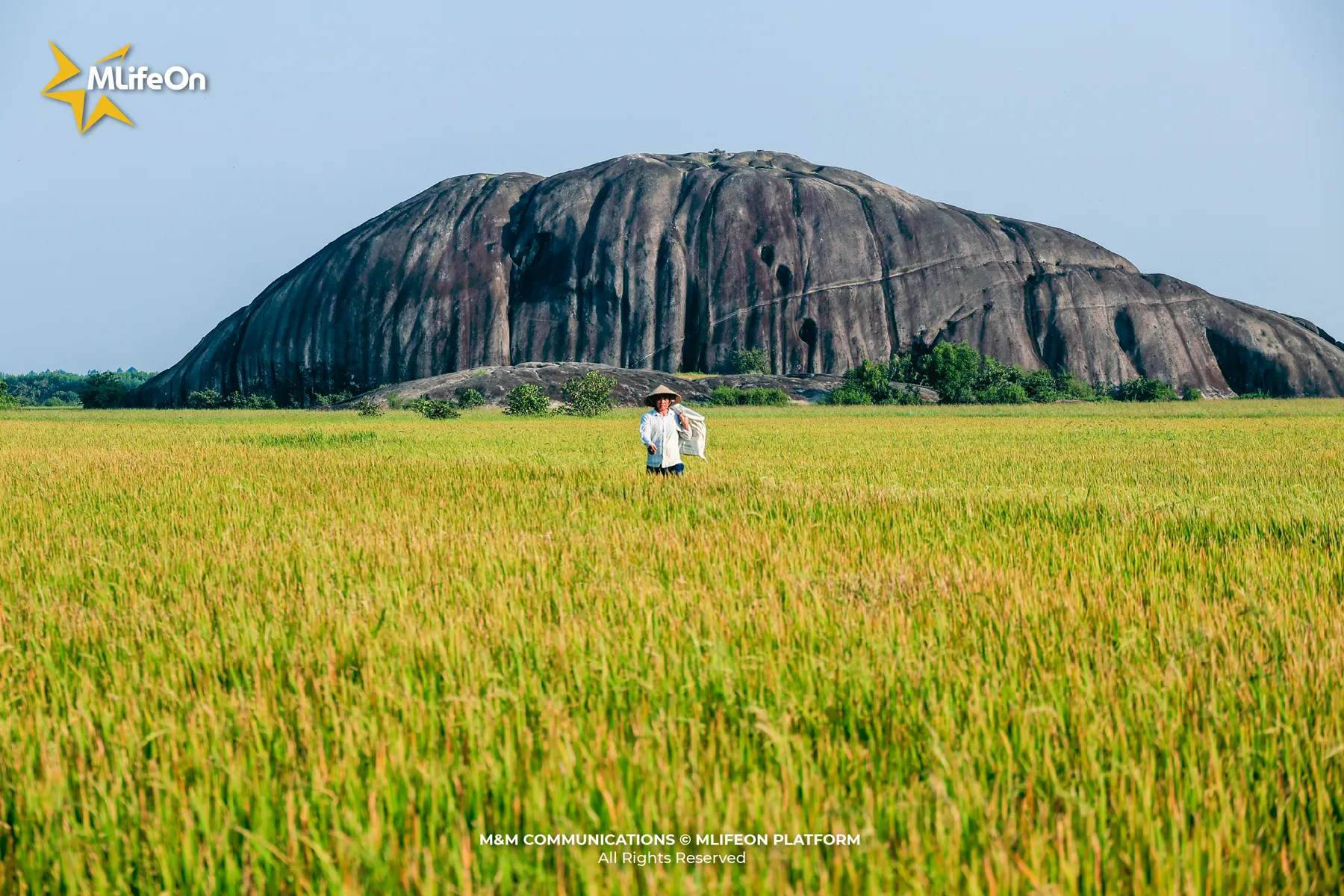
Rice in culture - from folk songs to beliefs
The growth process of rice - from sowing to flowering and grain formation, is always under the influence of soil, water and weather. It is this dependence that has caused people from ancient times to give this plant a special respect - as a source of life, as the giver of life.
The most obvious evidence is the harvest festivals, rice god worship ceremonies, or traditional agricultural rituals taking place at important times of the crop season (when the upper field/lower field is in operation) - not only having religious significance, but also expressing the deep desire for a full life, in harmony between humans and nature.
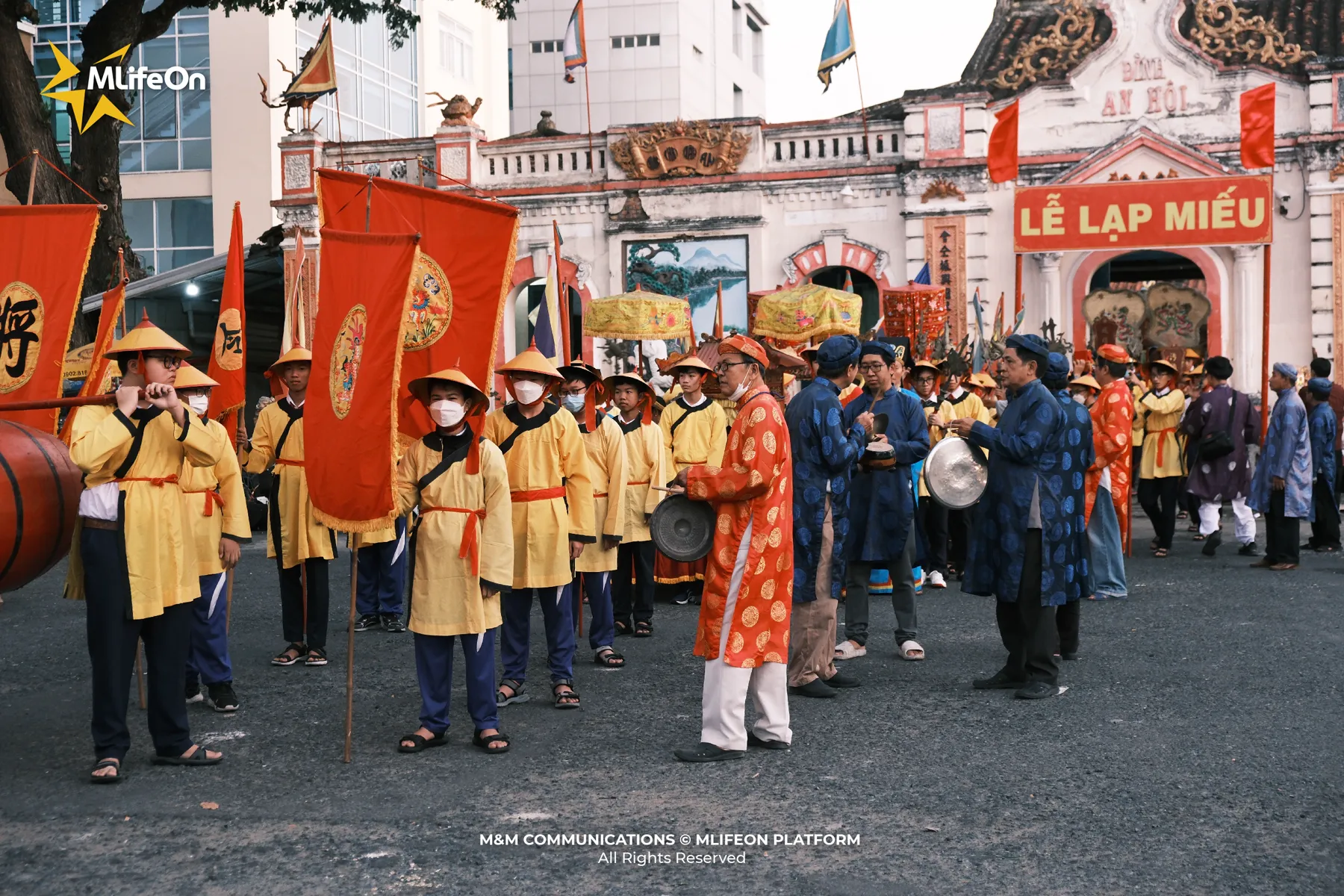
The Ky Yen (Pray for Peace) ceremony takes place at An Hoi communal house, Vinh Long province (old Ben Tre area) at the time of Thuong Dien - that is, the time to prepare for the start of the new crop.
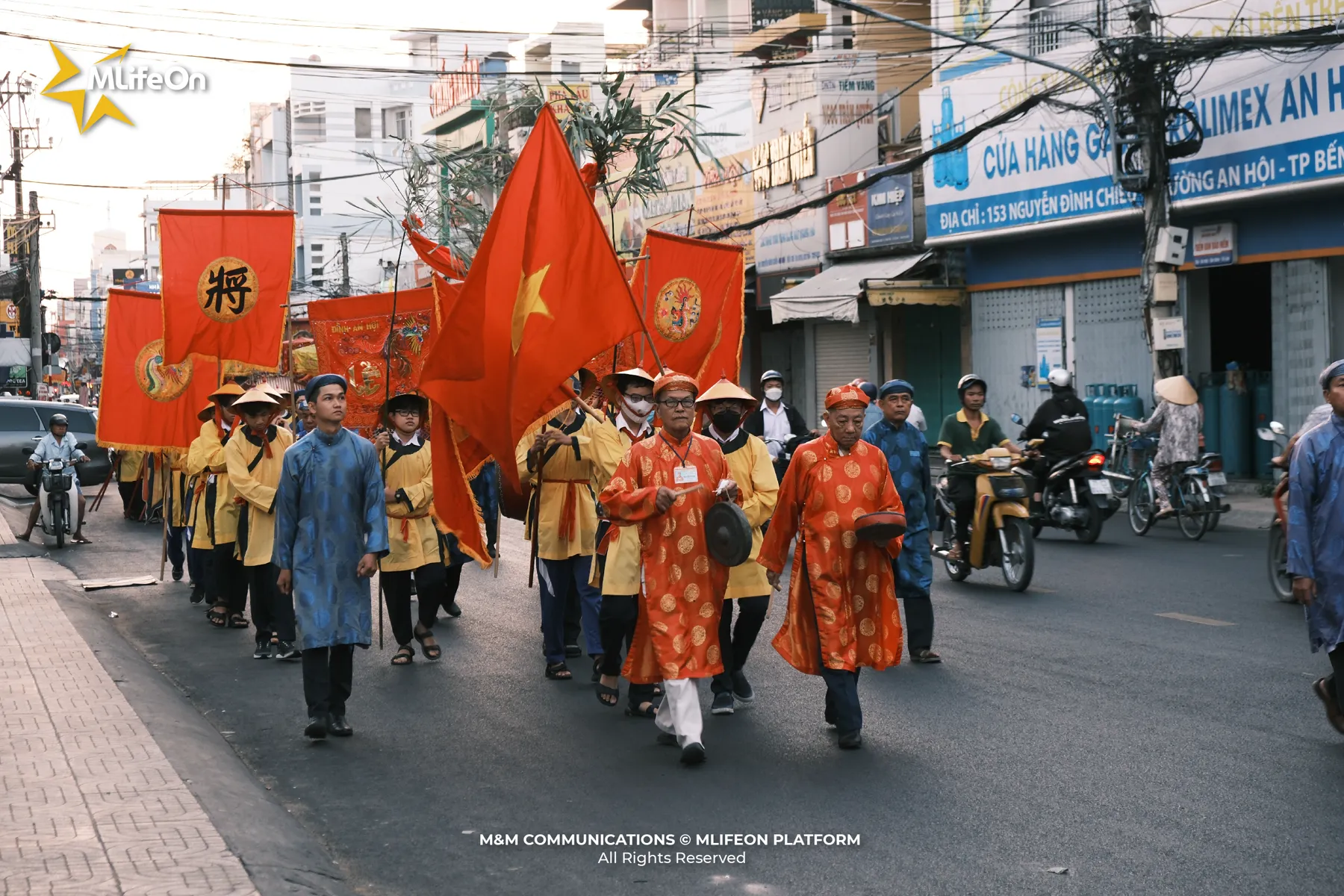
Not only is it a ritual to pray for "favorable weather, national peace and prosperity", the Ky Yen Festival is also an occasion to express the gratitude of the people around the temple area to Than Nong, the Thanh Hoang Gods, as well as those who have contributed.
Notably, the image of plump, round rice grains and heavy rice ears has gone beyond the role of food, becoming a symbol of fertility, prosperity and abundance. It is not only deeply ingrained in the cultural subconscious of the Vietnamese people, but also present in the spiritual life of many ethnic groups living on the rice civilization.
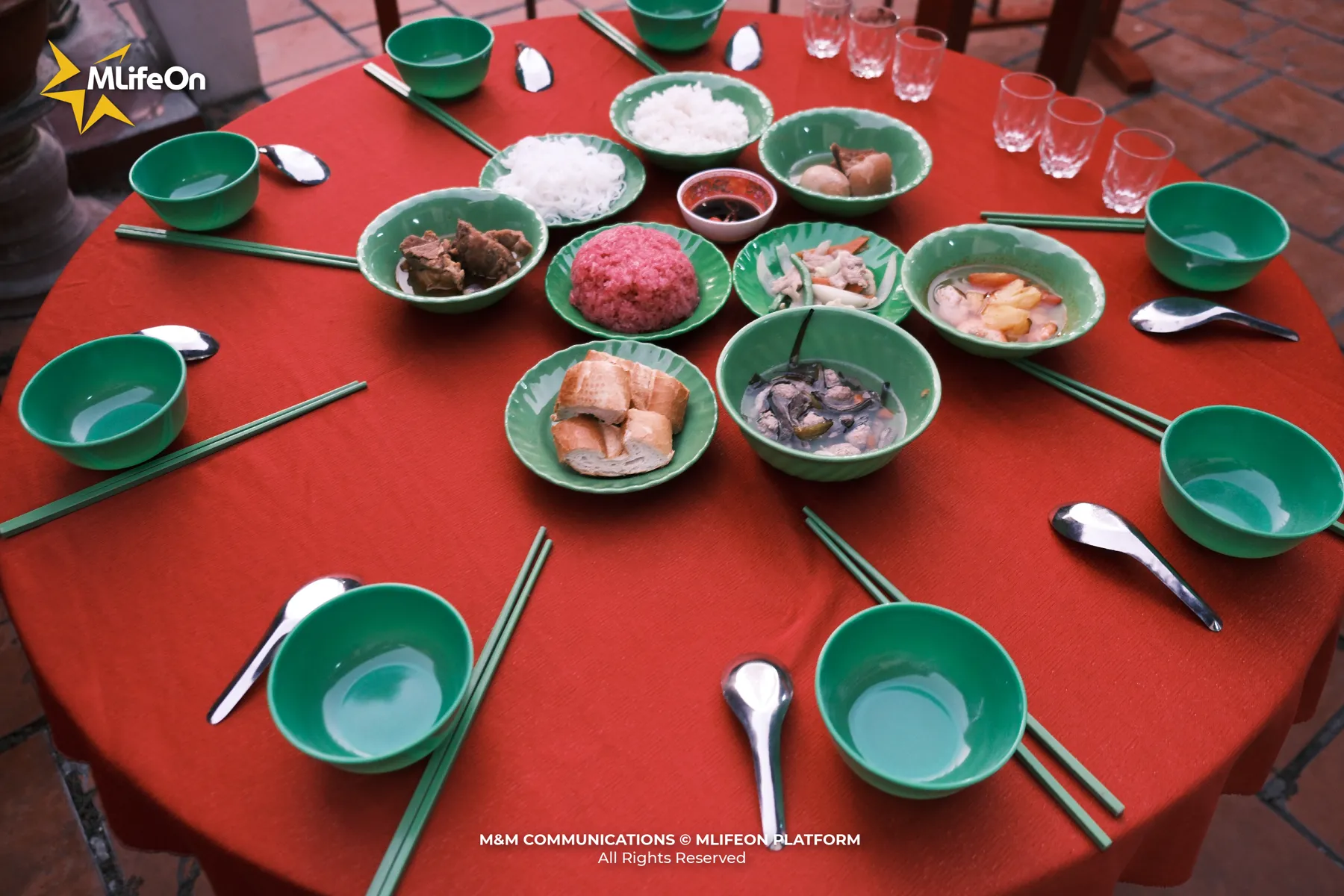
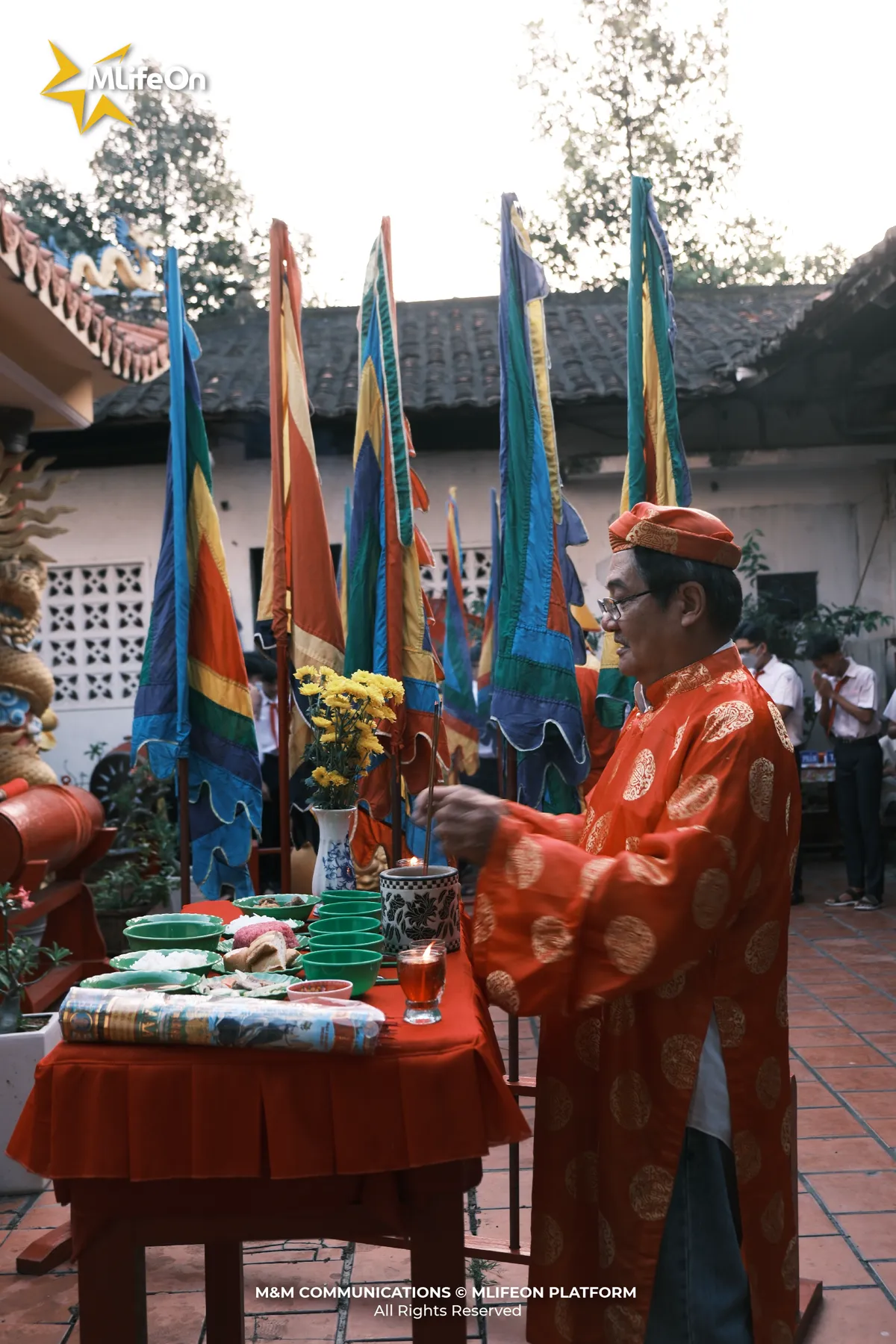
Not only is it a ritual to pray for "favorable weather, national peace and prosperity", the Ky Yen Festival is also an occasion to express the gratitude of the people around the temple area to Than Nong, the Thanh Hoang Gods, as well as those who have contributed.
Notably, the image of plump, round rice grains and heavy rice ears has gone beyond the role of food, becoming a symbol of fertility, prosperity and abundance. It is not only deeply ingrained in the cultural subconscious of the Vietnamese people, but also present in the spiritual life of many ethnic groups living on the rice civilization.
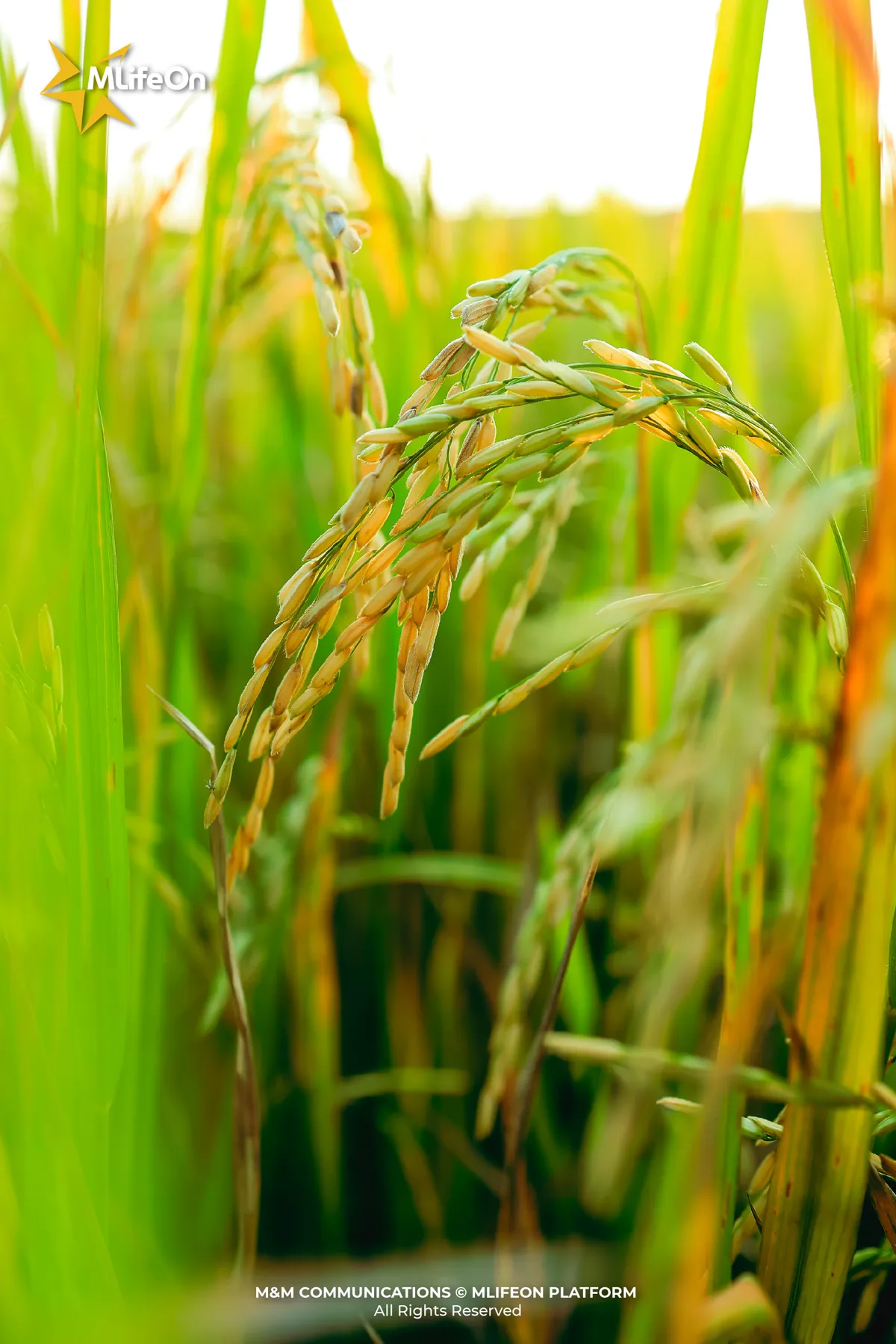
Not only deeply ingrained in the subconscious and beliefs of Vietnamese people, rice is also present in folklore through folk songs, proverbs, paintings and poems:
“Oh, everyone, hold a full bowl of rice
Every grain is fragrant and soft, yet a thousand times bitter and spicy.”
This folk song not only reminds us of the merits of farmers, but also shows the Vietnamese people's respect for each grain of rice - the crystallization of sweat, tears and love for the land, homeland and country.
In Dong Ho paintings, images of farmers harvesting rice, children playing in the fields, herds of buffalo leisurely in the fields... are all vivid slices of agricultural life.
When nature turns into a masterpiece
No matter who, when passing through the ripe rice fields, all want to linger to admire the scenery before their eyes. Because in the harvest season or the "golden season", the rice fields, especially the terraced fields in the Northwest, are transformed, wearing an attractive golden color, becoming a vivid picture of nature that you cannot miss.
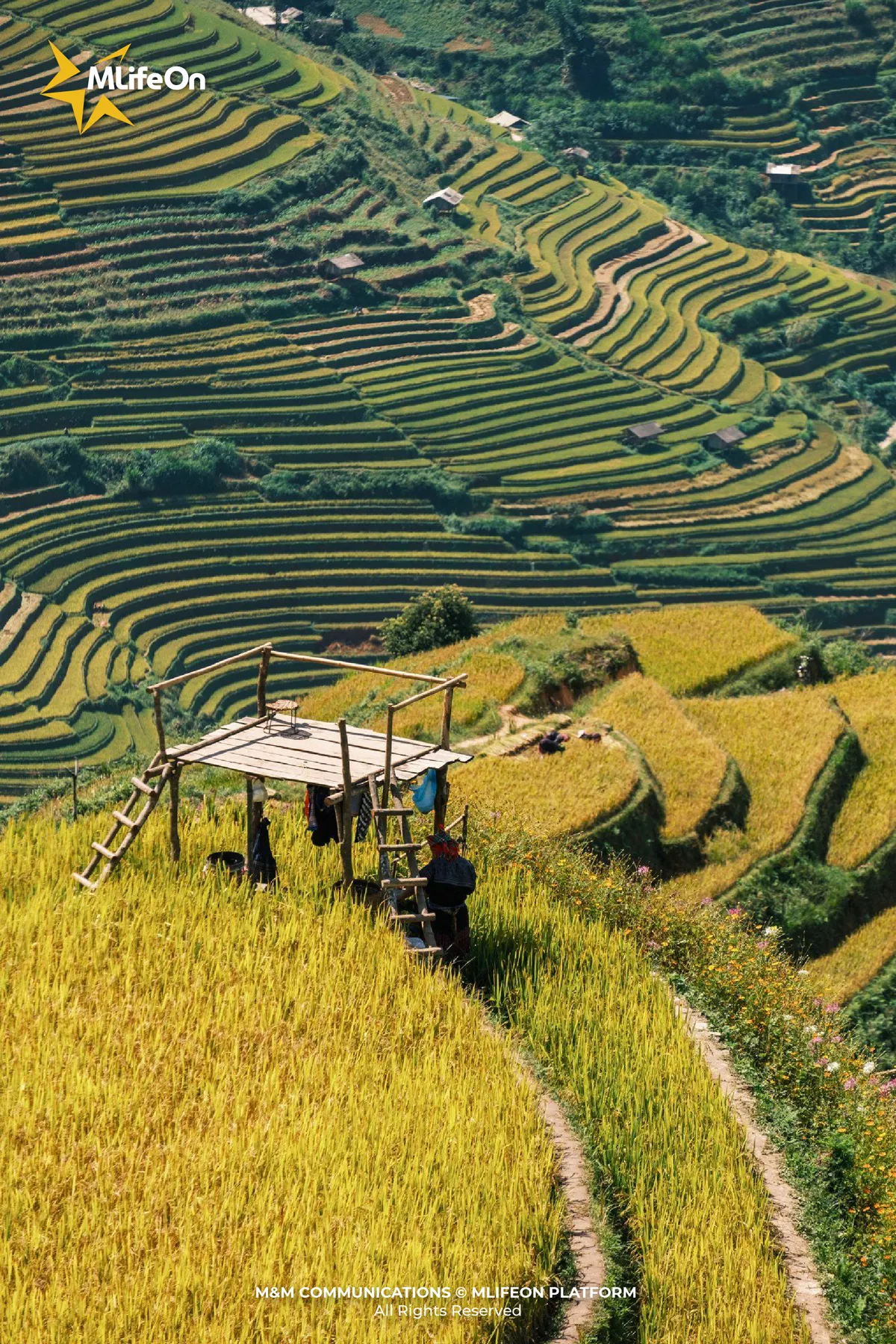
ripe rice in Mu Cang Chai
Once I stood in the middle of a ripe rice field in Mu Cang Chai, the wind blew gently, the scent of ripe rice wafted through, and I understood why people call it “the season of fragrant land and sky”.
The photos of terraced fields in the ripe rice season have become a symbol of tourism, attracting millions of domestic and foreign tourists.
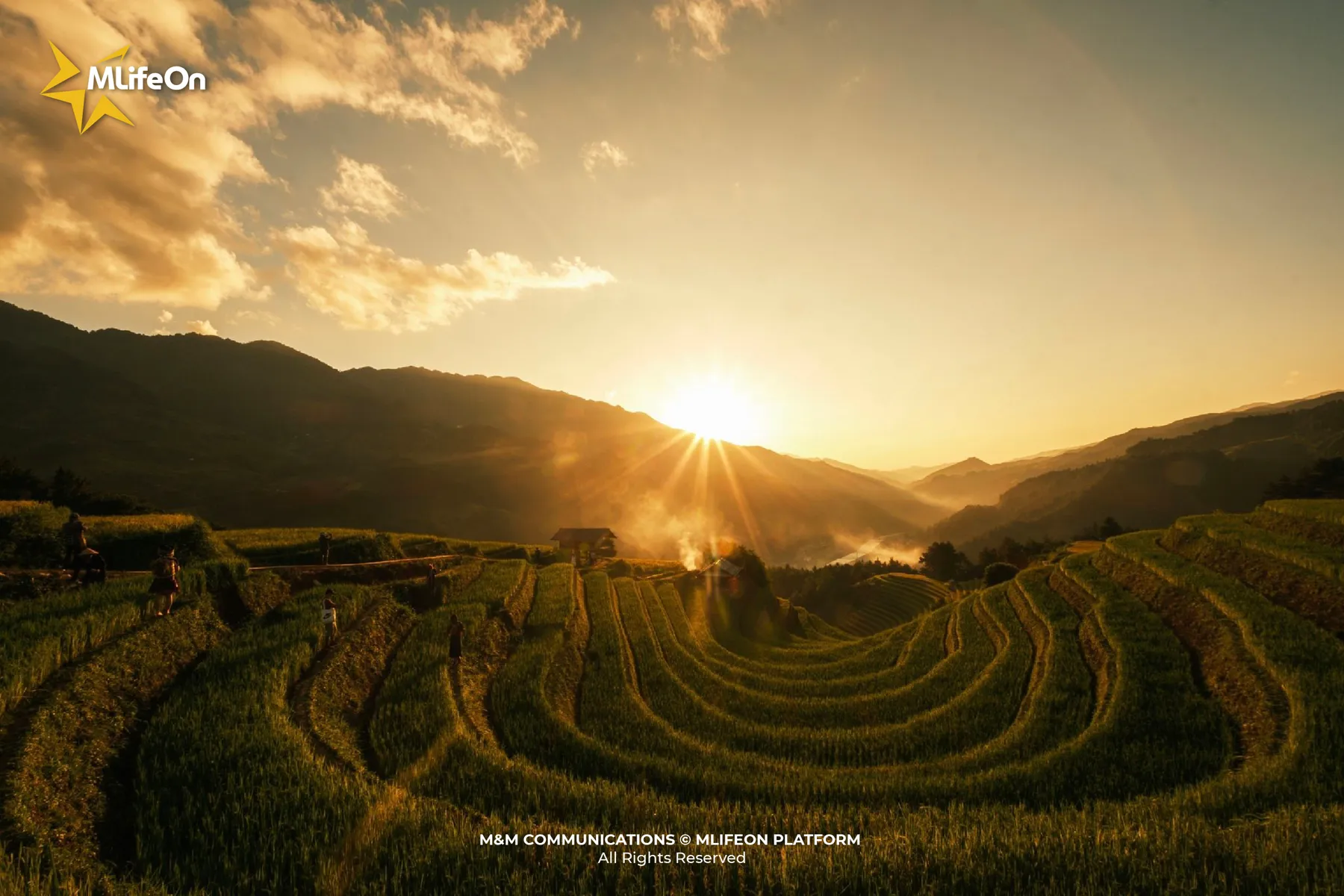
Rice in the ripening season - golden, beautiful and attractive. But rice is not only beautiful when ripe, but also beautiful when green, when harvested, and when dried. At each stage, the rice plant has its own color, a unique rhythm of life for the farmer.
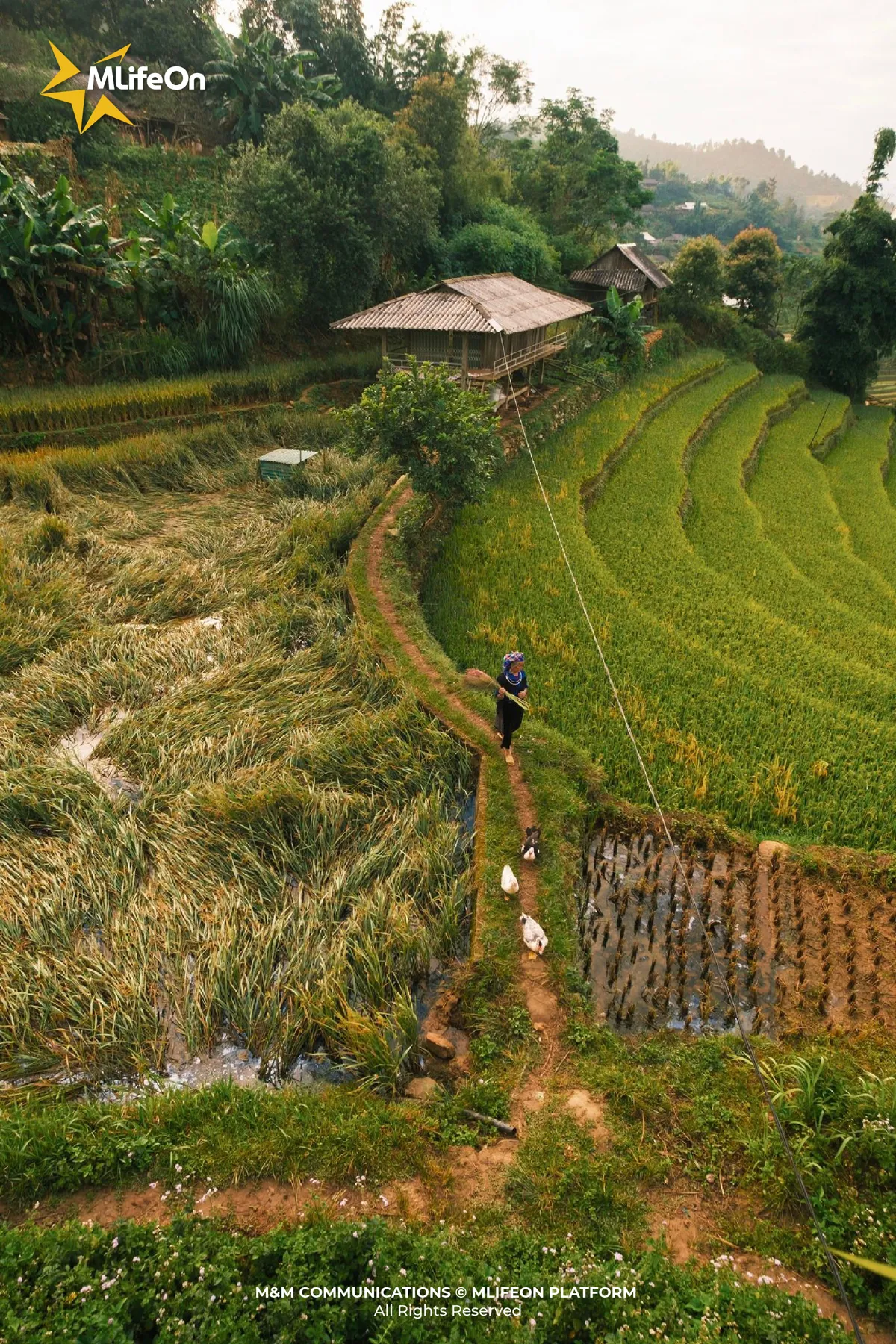
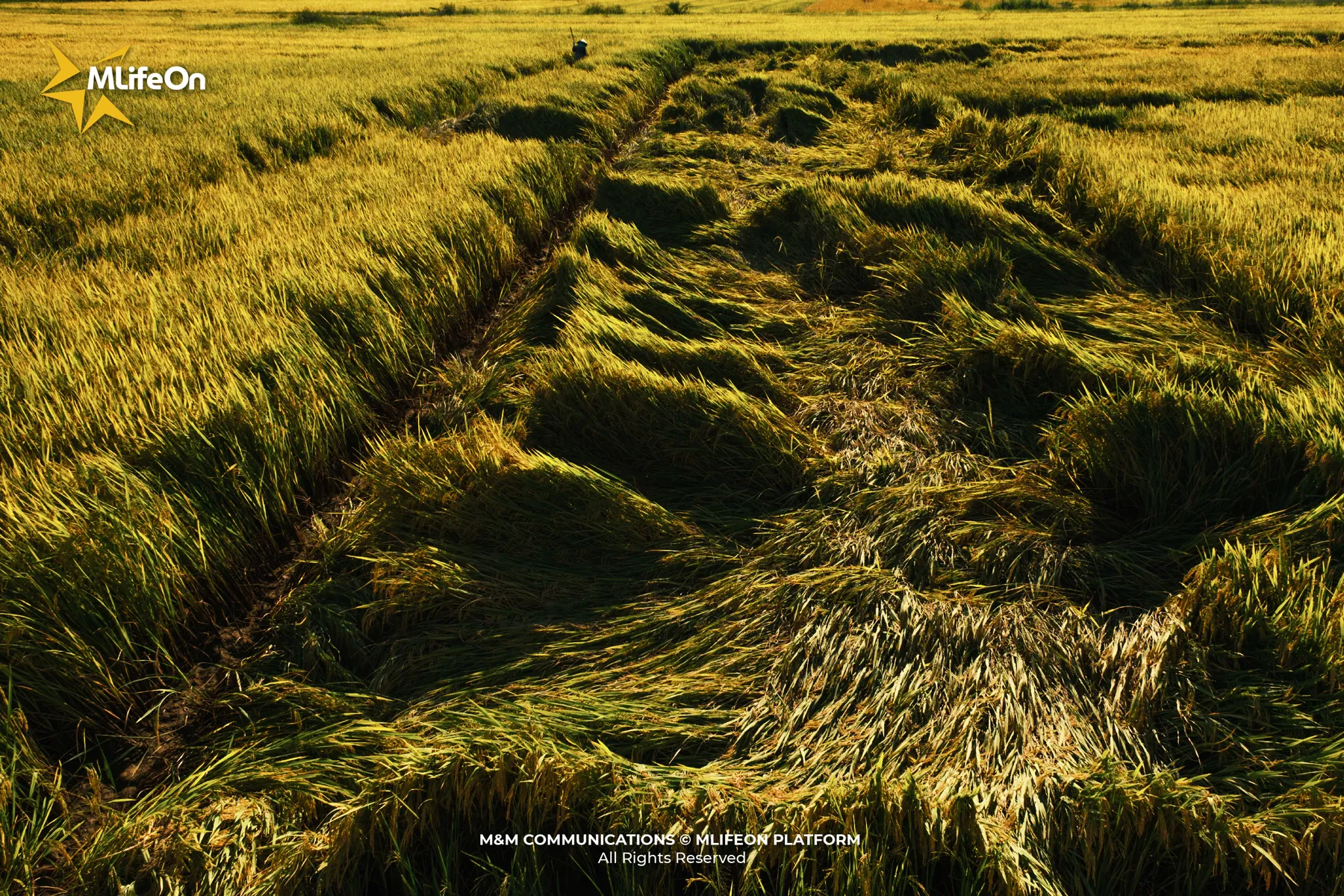
From white rice to culinary heritage
From rice grains - the crystallization of the rice plant, Vietnamese people have created an extremely rich culinary treasure with rice, vermicelli, pho, banh cuon, banh duc, banh gio... Each dish is not only a delicious dish but also carries its own cultural story.
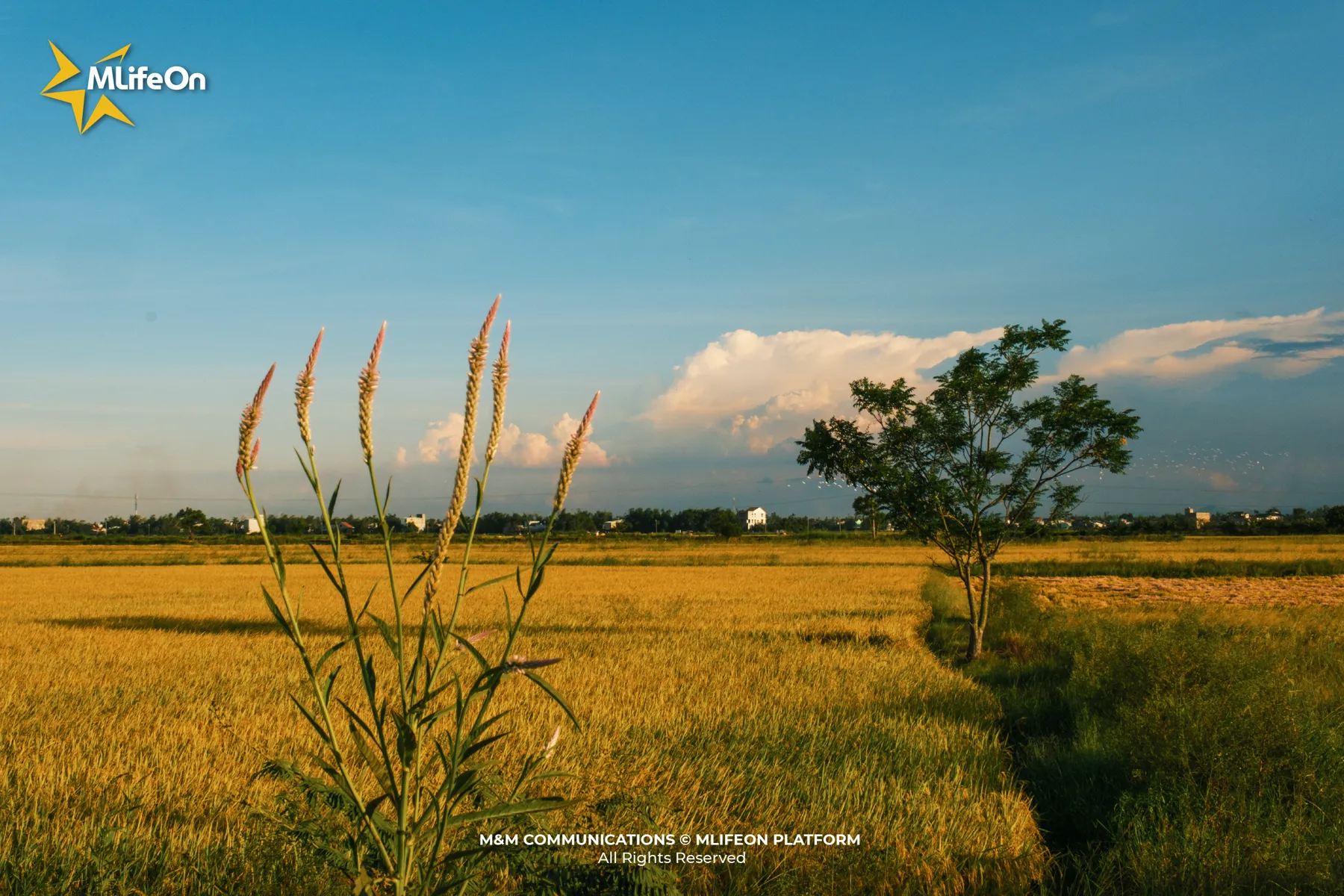
We have “Rice” - the simplest dish, which is also the center of every meal. No matter how full of delicacies, delicious food, and precious things a meal is, Vietnamese people always call it “eating rice”, enough to see the central position of rice grains and rice bowls in life.
From family meals to Tet meals, from farm lunches to ancestral worship meals - rice grains are always present as a part of the soul.
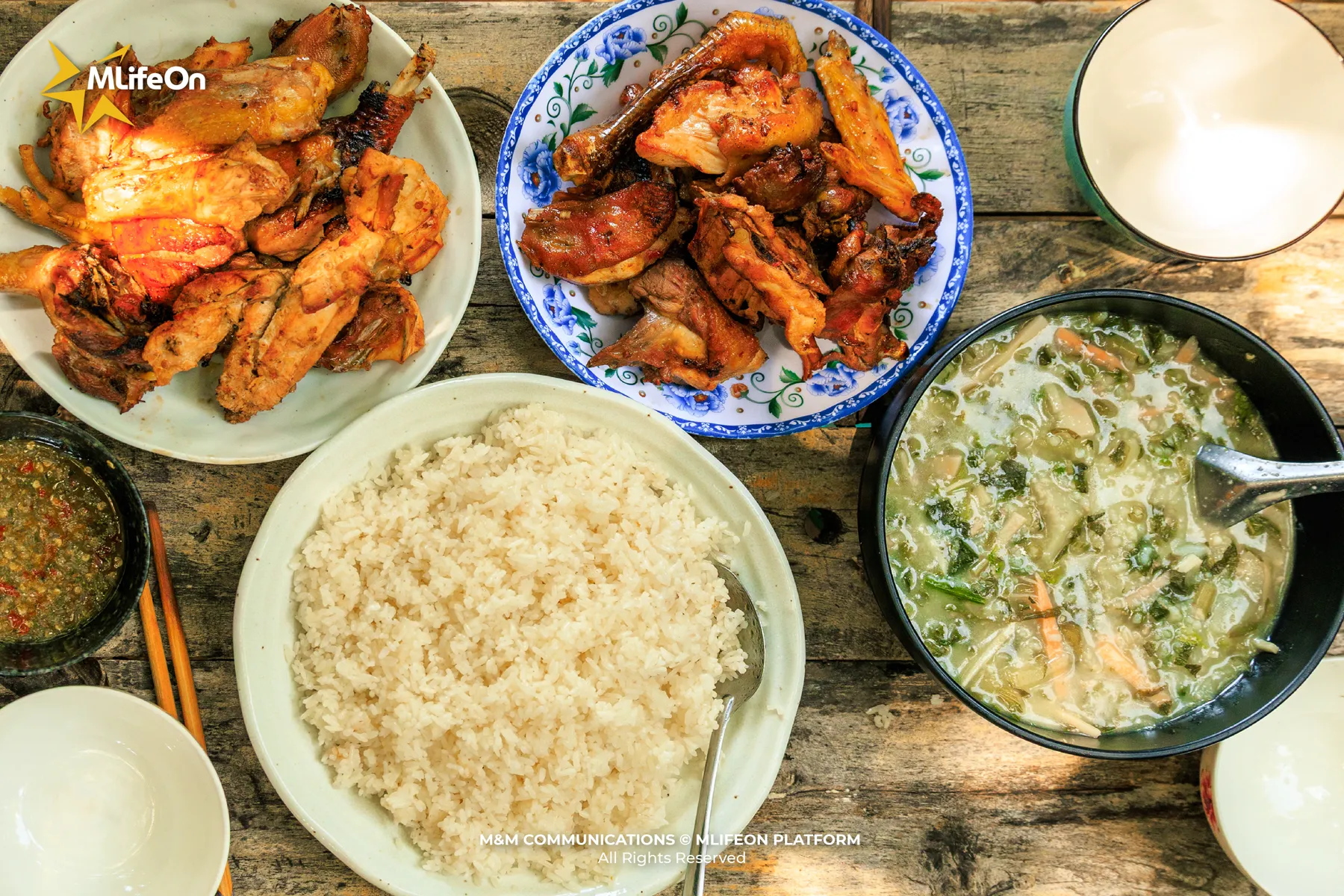
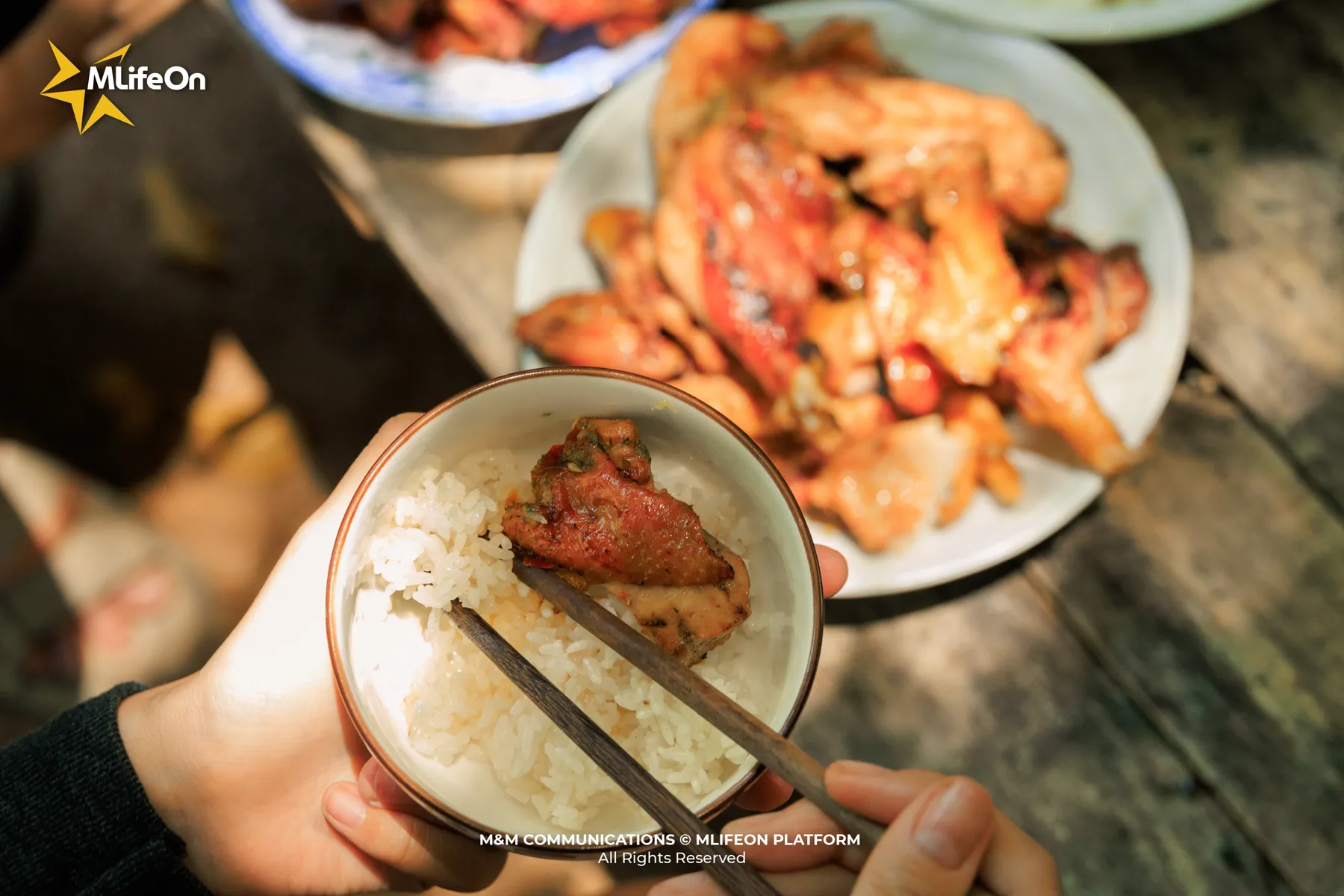
And also from the rice grains of the rice plant, the Vietnamese people created Hue beef noodle soup - a dish that has been recognized as a National Heritage, clearly demonstrating the timeless cultural value of rice in the lives of the Vietnamese people. It is not just a dish, it is the identity, the pride, the very unique flavor of the homeland of the country.
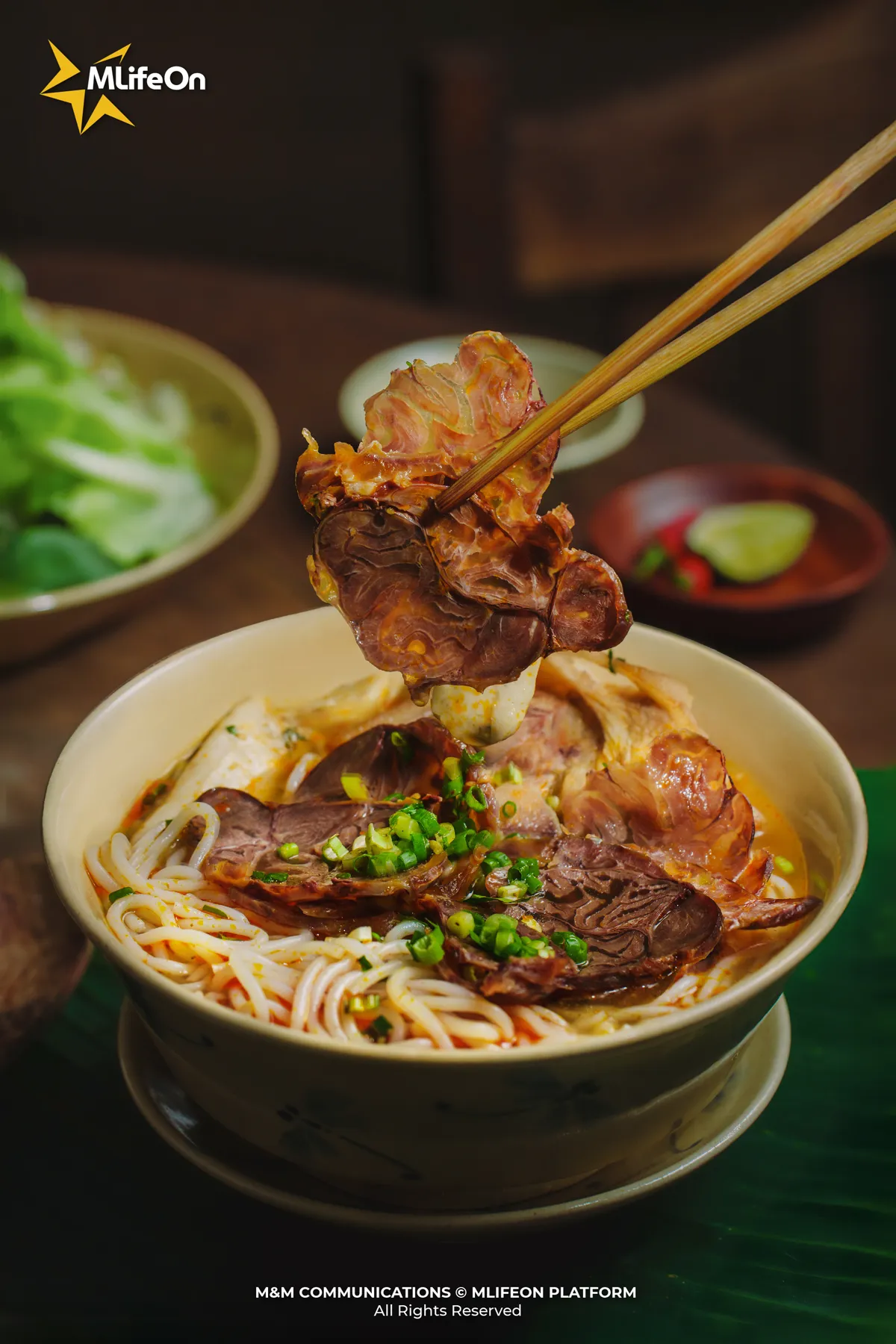
Hue beef noodle soup is recognized as a National Heritage.
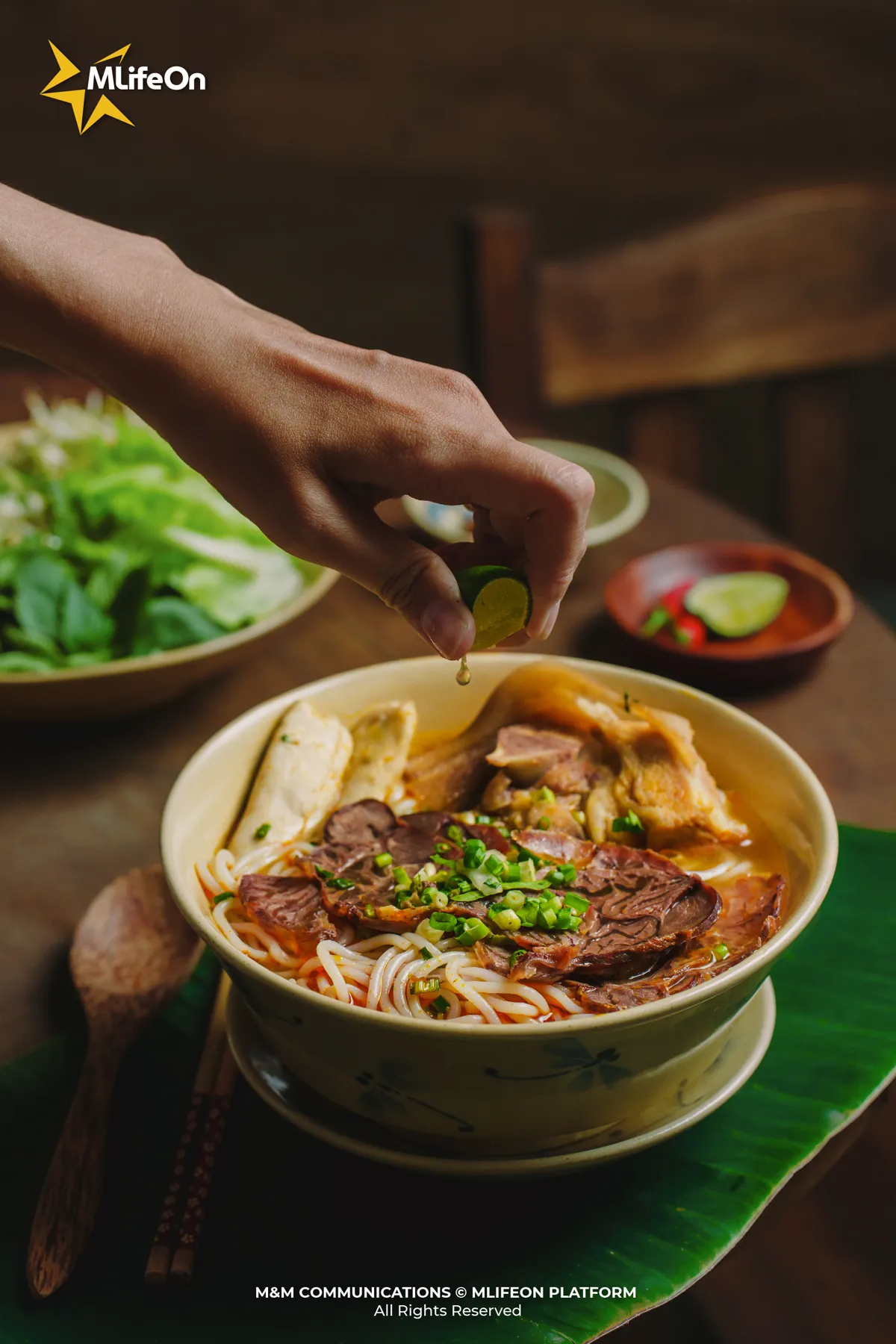
Every meal is a return. Return to the land, to the people, to the memories of the ripe rice seasons.
Rice in modern times - challenges and hopes
In the context of climate change, urbanization and industrialization, rice is facing many challenges: shrinking land, scarce water resources, and declining economic value. But at the same time, rice also opens up many new opportunities for people such as: agricultural tourism, OCOP products (locally sourced products) from rice, developing organic rice varieties, salt-tolerant rice...
Many localities have known how to exploit the beauty of rice fields to develop community tourism. Rice festivals, harvest experience tours, straw handicrafts... are contributing to reviving the cultural value of rice in modern life.
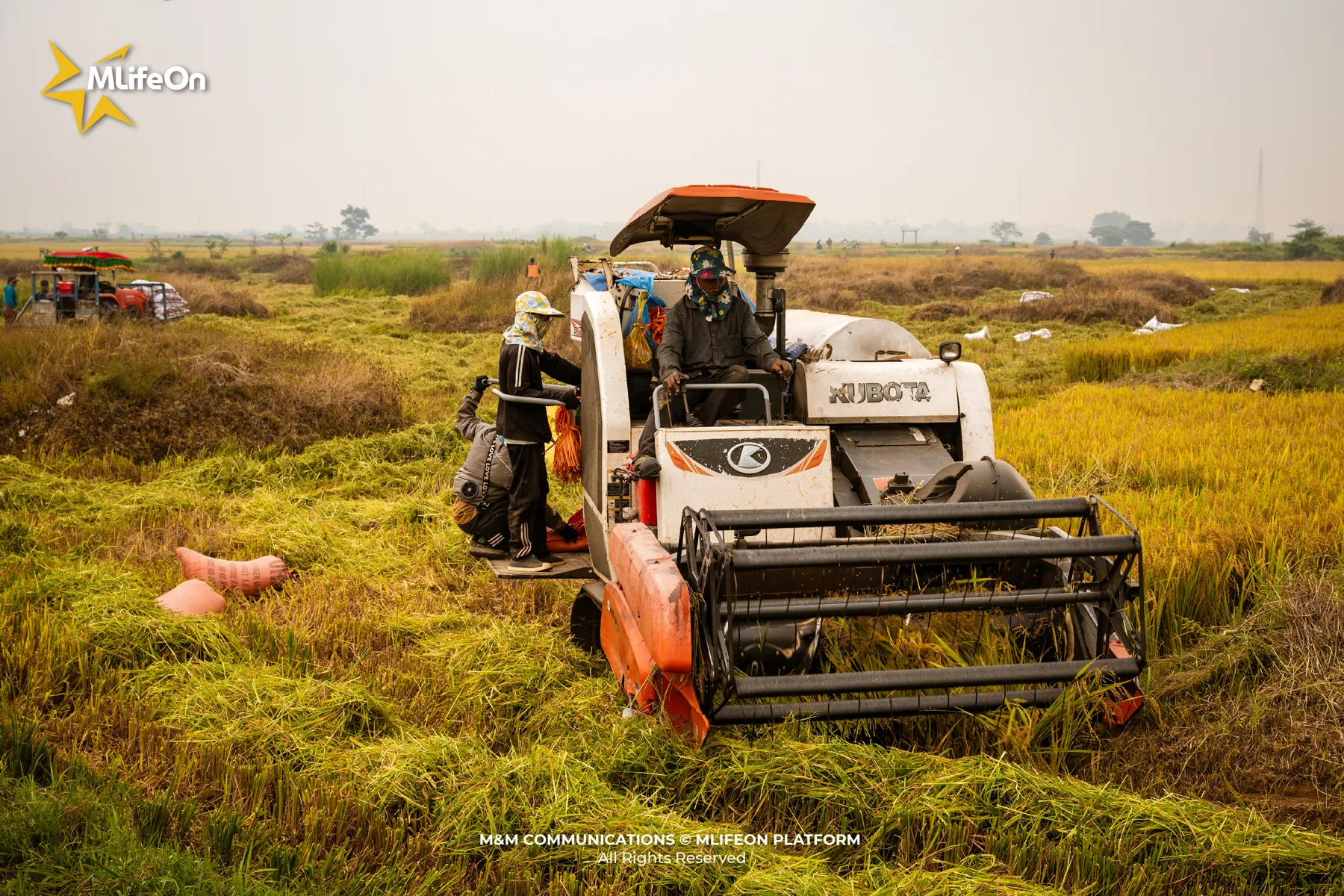
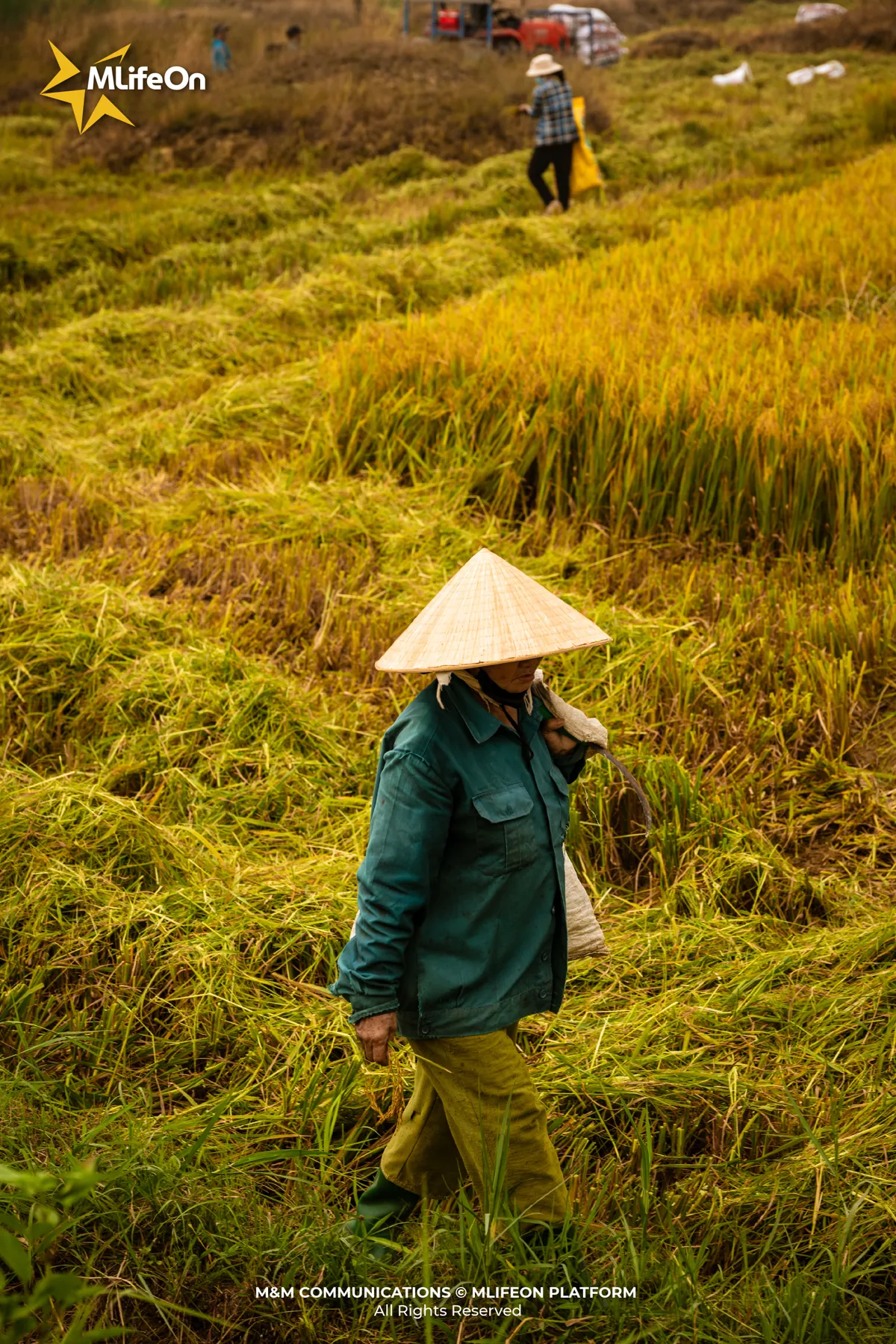
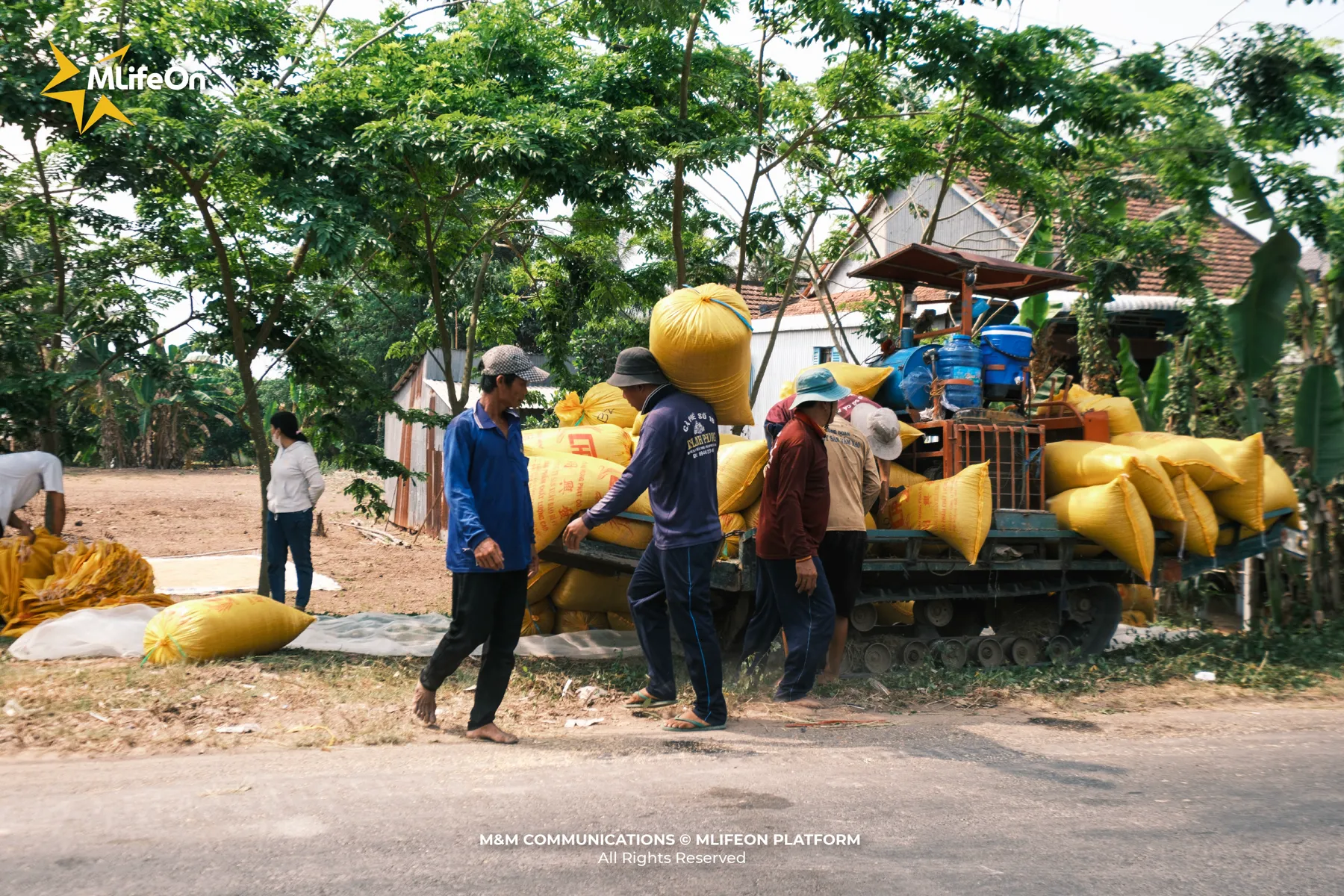
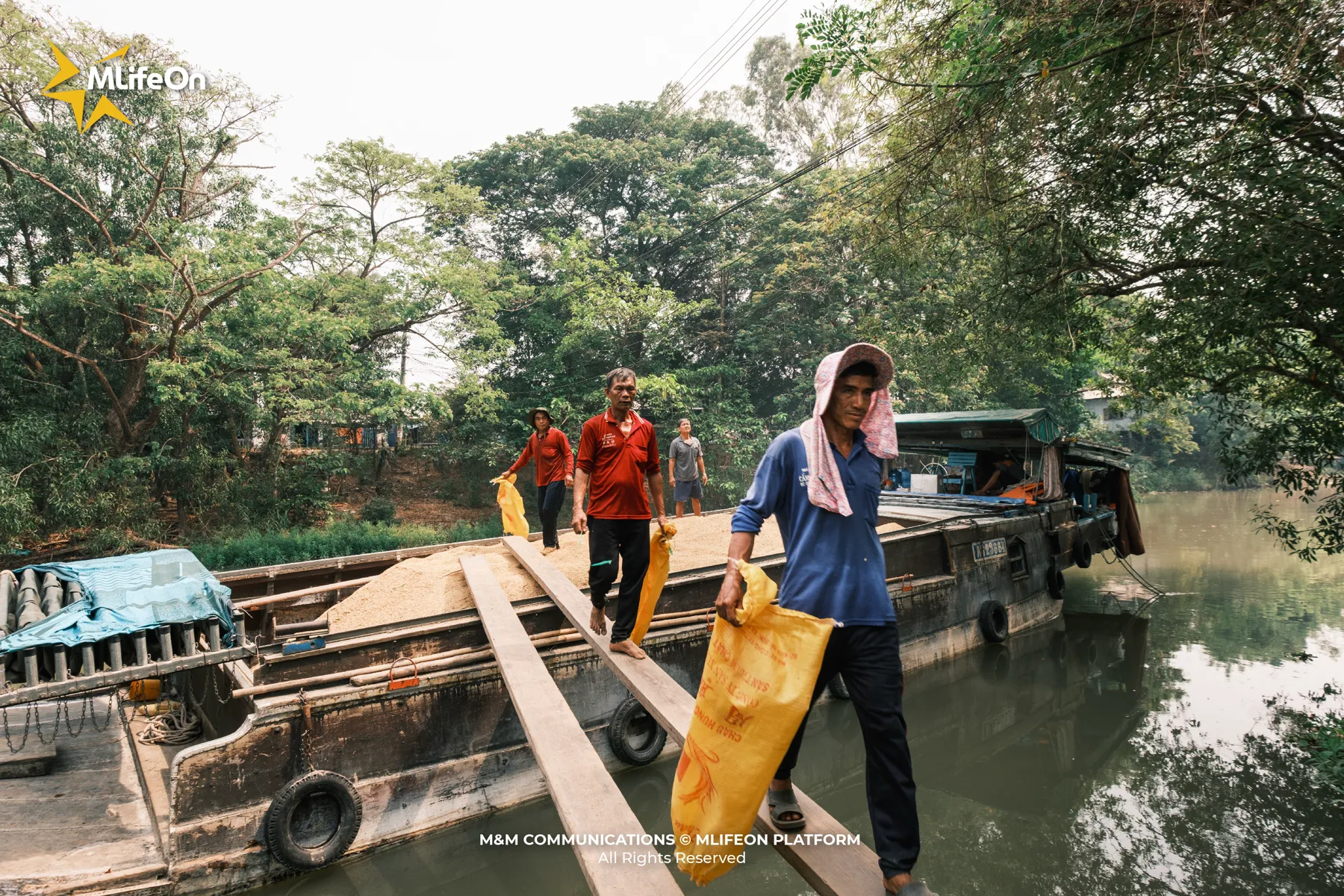
It can be said that - at the present time, rice is not only a slice of culture and life of Vietnamese people, but also a special link to prosperity, to the future and new things.
Conclusion
Thus, rice not only feeds people, but also nourishes culture, soul and national identity. From the fields to the dining table, from folk songs to culinary heritage, rice is present as an indispensable part of the journey of Vietnamese people.
—---
CREDIT:
- Photography: Luan Nguyen, Kien Trang
- Content: Giang Huynh
- Design: Trung Huynh





















